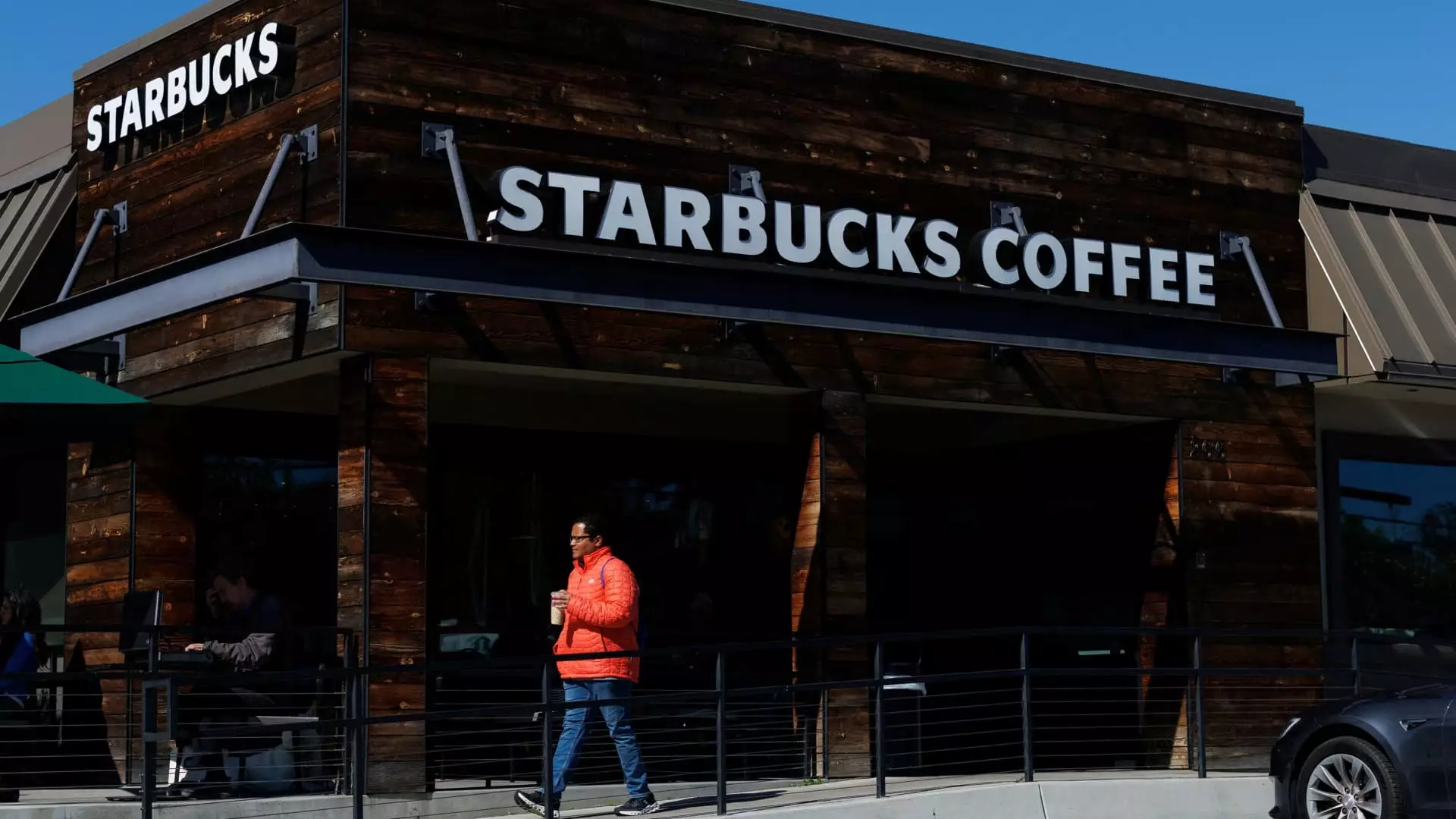In an economic landscape fraught with uncertainty, the alarming drop in restaurant stocks reveals a troubling trend. The recent imposition of hefty tariffs by President Donald Trump has sent shockwaves through the financial markets, with investors steeling themselves against the possibility of an impending recession. These tariffs, primarily aimed at key trading partners, are not expected to strike at the core of restaurant businesses directly. However, the subsequent inflation that looms on the horizon poses a dire threat to consumer spending—chilling demand across the entire sector. Analysts like UBS’s Dennis Geiger have cautioned that while the direct cost impact on restaurants may be manageable, the broader ramifications on consumer behavior could tip the scales into a downturn season.
Starbucks: A Canary in the Coal Mine
The deterioration of Starbucks’ stock serves as a harbinger of what’s to come. Once a stock market darling, shares plummeted over 2% following a downgrade from Baird, further exacerbated by a staggering 20% decline since the announcement of the new tariffs. Analysts point to a perfect storm brewing around the coffee giant. Higher import costs tied to international coffee trading, burgeoning anti-American sentiment, and the omnipresent fear of recession all meld into a recipe for disaster.
As coffee production remains heavily localized in the Coffee Belt of Latin America, Africa, and the Asia-Pacific, potential trade disruptions pose a significant threat to the company’s supply chain. The reality is that commodities like coffee cannot simply be produced anywhere; climatic conditions, local expertise, and consumer demand dictate the rhythms of coffee farming. This harsh truth could jeopardize earnings for Starbucks, making any form of recovery exceptionally difficult.
Fast Casual Chains: Facing the Storm Unprepared
In the fast-casual realm, the fallout is equally stark. Stocks from beloved brands like Chipotle, Sweetgreen, and Wingstop have all taken hits—each a tangible reflection of investor sentiment soured by economic headwinds. Casual dining chains have not fared well either; entities like Dine Brands (over 3% drop) and Darden Restaurants slid amid a complex web of consumer reluctance and shifting dining preferences. While the notion that fast food typically reigns supreme during recessions has merit, rising inflation may considerably reduce discretionary spending across all consumer classes.
Low-income customers, already sensitive to pricing, have reeled back on visits to dining establishments, while higher-income families seem intent on maintaining their dining habits, creating a bifurcation within the consumer base. Such trends could lead to a prolonged revenue slump across the entire restaurant industry—a concept that should terrify investors.
International Markets: A Tightrope Act
As geopolitical tensions escalate and tariffs threaten business as usual, restaurants that rely on international markets find themselves precariously perched on a tightrope. Notably, Starbucks has faced boycotts in China—its second-largest market—for political reasons in the past. Given that restaurant brand loyalty can be volatile and quickly transformed into anti-Western sentiment, the stakes are exceptionally high. The question emerges: will international sales continue to be a significant growth driver, or will they transform into a burgeoning liability?
Spanish and Italian restaurants, known for their reliance on imported products, also face increased risks from tariffs, further complicating their financial outlook. The ability to adapt hits a wall given the importance of maintaining quality and timely service in such industries.
As restaurant stocks continue their troubling decline, industry players must prepare for a future that may not just include economic adjustments but radical transformations in consumer preferences as well. The paradox lies in the resilience of low-cost chains during challenging economic times clashing with the peril of diminished demand for higher-end dining experiences. This conundrum may dictate what the landscape of American dining looks like in the years ahead. In a world where consumer sentiment is as fickle as the weather, restaurateurs must reevaluate strategies in an era where a single political decision can swing the pendulum of success to despair overnight.

